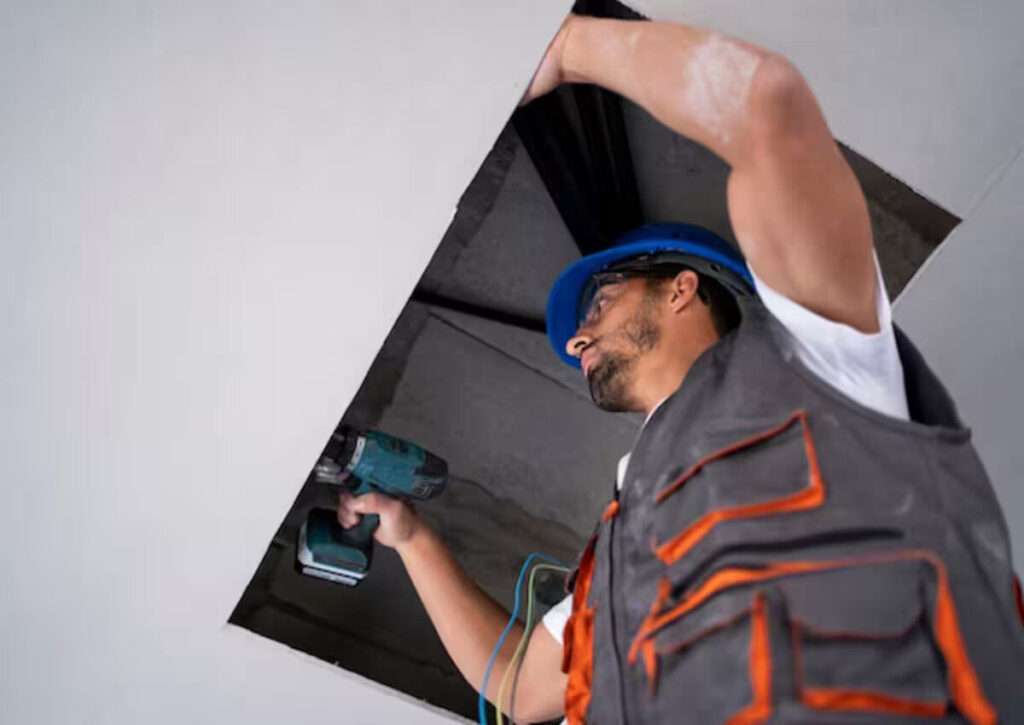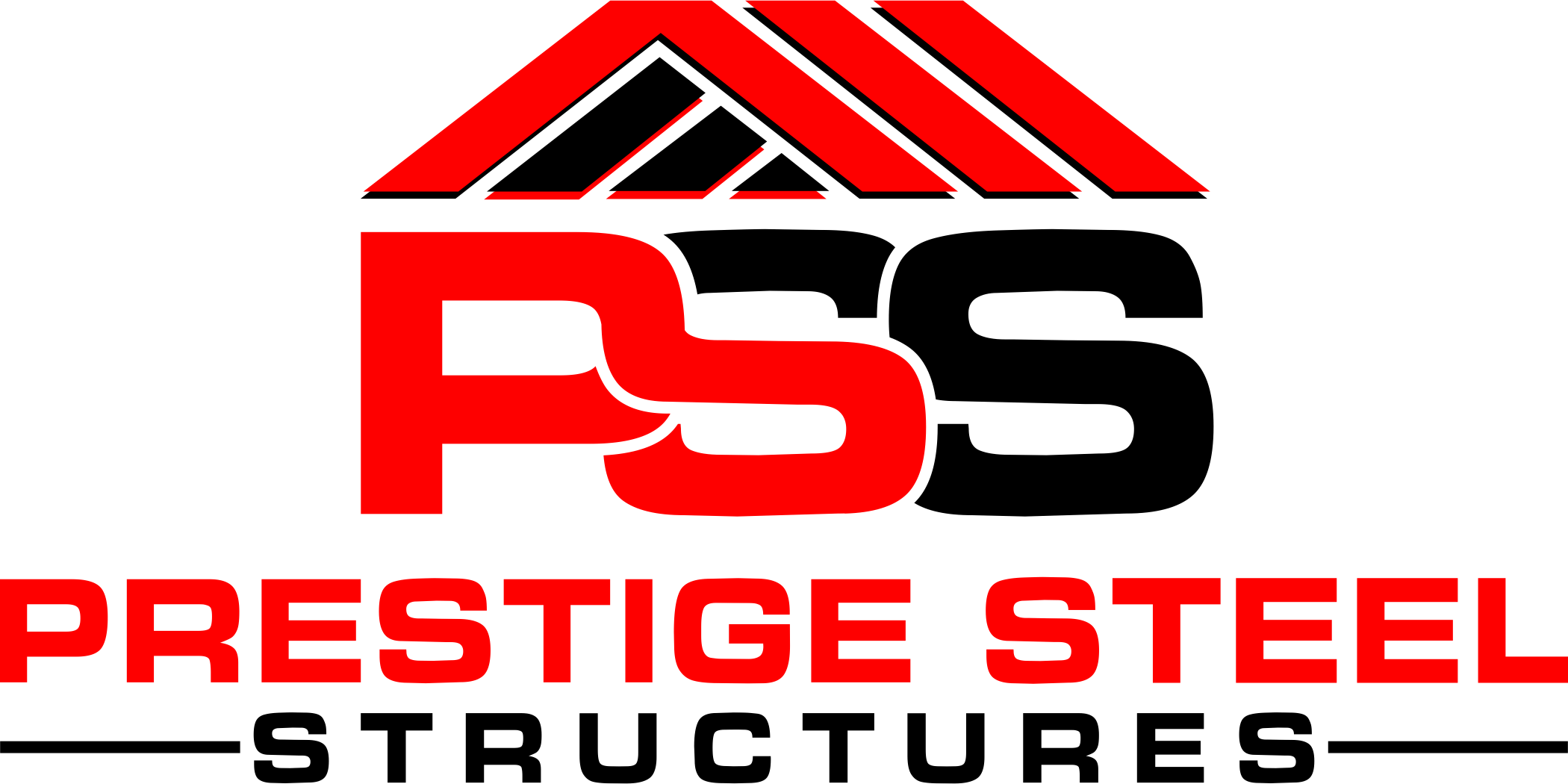Steel building are popular for their affordability, durability, and quick assembly. However, they can also have significant downsides, particularly when it comes to noise pollution. These structures are prone to amplifying sound, with noises like clangs, bangs, and echoes bouncing throughout the building, creating a loud and often disruptive environment.
To reduce noise transmission in a steel building, the primary solution is to invest in effective sound insulation. Quality insulation helps control noise while also improving the building’s thermal comfort. There are various insulation materials to choose from, such as fiberglass, spray foam, or mineral wool, each providing varying levels of sound dampening and thermal benefits.
But insulation alone isn’t the only method for soundproofing. Several additional techniques can further minimize both internal and external noise. For instance, installing sound-absorbing panels on walls and ceilings can help reduce echoes within the building. Additionally, using floor mats or carpets can minimize sound from foot traffic and equipment. Sealing gaps around doors, windows, and other openings will also prevent sound from leaking in or out of the structure.
To enhance your building’s soundproofing, consider combining different techniques tailored to your specific needs and noise sources. With the right approach, you can effectively reduce noise pollution in your steel building and create a quieter, more comfortable environment for all. By following these tips and choosing the appropriate soundproofing methods, you’ll ensure that your steel building offers both practicality and peace.

Why Soundproof Steel Buildings
Noise pollution in metal buildings can be more than just an inconvenience—it can also pose risks to health and safety. Prolonged exposure to high noise levels can lead to distractions, annoyance, increased stress, and, over time, even permanent hearing damage. In workplaces such as manufacturing facilities, elevated noise can also contribute to safety hazards by making it difficult for workers to communicate effectively and concentrate on tasks.
A comfortable indoor noise level is typically below 45 decibels. However, in industrial and manufacturing environments, this can be hard to achieve due to the nature of the activities and equipment involved. A more realistic goal for these settings is to reduce noise levels below the OSHA limit of 85 decibels. Achieving this requires attention to every aspect of the building’s structure, as noise can infiltrate through various entry points and structural elements.
Here’s what you should consider when soundproofing a steel building:
- Wall Systems: Layers, spacing, insulation, and framing design all impact how much sound is absorbed or transmitted through walls. Effective insulation within the walls can significantly dampen noise.
- Foundation and Flooring: The type of flooring and coverings used can affect sound transmission. Installing sound-absorbing materials like mats or carpet can help reduce noise from machinery and foot traffic.
- Ceiling Layers and Insulation: Ceilings can be a significant source of sound transfer. Using multiple layers and quality insulation will help in reducing noise reverberation within the building.
- Doors and Windows: The choice of materials for doors and windows, as well as their placement, can influence sound control. Opt for soundproof or insulated doors and windows to further block noise.
- Ventilation and Sealing: Sealing gaps around openings and using sound-dampening materials in ventilation systems can prevent noise from leaking in or out, further enhancing soundproofing efforts.
By addressing these components, you can create a quieter, more productive environment within a steel building, aligning with OSHA guidelines and fostering a safer, more comfortable space for everyone involved.
Health Benefits of Soundproofing in Steel Buildings
Soundproofing a steel building goes beyond just creating a quieter space; it significantly enhances health and well-being. In environments where noise levels are high, such as industrial facilities, prolonged exposure to loud sounds can lead to increased stress, reduced concentration, and even long-term hearing damage. By implementing effective soundproofing measures, you can create a calmer and more focused atmosphere, which directly contributes to improved productivity and mental health.
Studies have shown that reducing noise pollution lowers stress levels, enhances cognitive function, and promotes overall wellness. Soundproofing can also improve safety in noisy work environments, as it enables clearer communication and reduces distractions, ultimately fostering a healthier, more comfortable space for everyone involved.
How Is Steel Different from Other Types of Construction?
Steel is often associated with the loud clanging noises it can produce, like a thin sheet rattling in the wind that sounds as intense as thunder. However, steel can also be remarkably effective in sound control when used strategically in construction.
Unlike other building materials, steel offers unique soundproofing qualities based on how it’s utilized. It can absorb, contain, or reflect sound, depending on its application. Here are some ways steel can manage noise:
- Sealed Spaces to Prevent Sound Transmission: Steel components can be tightly sealed at edges and connections, forming an airtight barrier. This sealing prevents sound from passing in or out of a space, enhancing sound insulation and helping to control noise levels effectively.
- Reflecting Sound Due to Density: Steel’s density enables it to reflect sound waves away from their source rather than absorbing them. This characteristic can be especially beneficial in reducing overall noise within a structure, as sound waves are directed outward instead of reverberating inside the building.
Steel’s adaptability in sound control sets it apart from other construction materials like wood or concrete, which may not offer the same versatility in managing noise. By carefully designing and constructing with steel, you can create a quieter environment while benefiting from steel’s durability and strength. This versatility makes steel a unique choice for building projects where sound management is a priority.

Effective Soundproofing Methods for Steel Buildings
- Insulate the Walls and Roof: Start by adding insulation to the walls and roof of the building. Fiberglass, foam, and mineral wool are excellent options for absorbing sound. This not only dampens noise but also improves the building’s energy efficiency.
- Install Acoustic Panels: Acoustic panels are specifically designed to absorb sound. Place these panels on walls and ceilings to reduce echo and prevent sound from bouncing around the space. They come in various styles and can be customized to match the interior decor.
- Use Soundproof Curtains or Blankets: Heavy, thick curtains or specially designed soundproof blankets can be hung over doors, windows, and walls. These materials block out noise and add an extra layer of sound insulation.
- Seal Gaps and Cracks: Sound can easily travel through gaps around doors, windows, and other openings. Use weatherstripping or acoustic sealant to fill in these spaces and prevent noise leakage.
- Add Mass-Loaded Vinyl (MLV): MLV is a dense, flexible material that can be installed on walls, floors, and ceilings to block sound. It’s particularly effective in steel buildings due to its high mass, which helps reduce noise transmission.
- Consider Floor Underlayment: Adding an underlayment beneath flooring can help absorb sound. Rubber, cork, or foam underlays are ideal for reducing noise from footsteps and other impacts.
By incorporating these soundproofing techniques, you can greatly reduce the noise within your steel building, creating a quieter and more pleasant space.
Materials for Soundproofing Steel Buildings
Many acoustic products offer multifunctional benefits, such as thermal insulation, aesthetic enhancements, and improved sound control. Choosing the right materials and making strategic architectural decisions, like maintaining airspace between wall and ceiling layers, are crucial for effective soundproofing in steel buildings. Here are top soundproofing materials:
- Cellulose Insulation: These panels or batts improve temperature control and reduce sound transmission in walls and ceilings.
- Denim Insulation: Made from recycled denim, this sustainable insulation provides thermal and sound benefits, available in various thicknesses.
- Vinyl Sound Barriers: Installed directly onto framing beneath drywall, these barriers effectively block sound between spaces.
- Bonded Acoustical Cotton Panels: Ideal for large spaces, these cotton panels absorb sound and minimize echoes on walls and ceilings.
- Acoustical Panels: Common in studios, they offer sound absorption and stylish designs, perfect for walls and ceilings.
- Wood Wool Acoustical Panels: These wood fiber panels enhance thermal and noise protection while adding visual warmth.
- Fabric-Wrapped Acoustical Panels: Custom-sized for theaters, these panels reduce noise and match various interior designs.
- Polyester Acoustical Panels: Tackable and customizable, they minimize echo and can feature printed graphics.
- Window Inserts: These acoustical inserts fit existing windows, improving thermal efficiency, blocking noise, and filtering UV light radiation.
- Door Seal Kits: Sealing gaps around doors with these kits reduces noise. Additional door bottoms can enhance soundproofing.
- Rubber Floor Underlay: Placed under flooring, these underlays dampen vibrations and improve noise control.
Using these materials enhances acoustic comfort in steel buildings, making the space quieter and more conducive to focus and relaxation.

Tips for Soundproofing in Steel Buildings
Steel buildings, like carports, garages, and commercial structures, often have large, open floor plans, making soundproofing a challenge. To effectively soundproof your steel building, consider these tips:
- Identify the Noise: Determine if the noise is external, internal (like machinery), or from crowds. Knowing the source, direction, and level (in decibels) helps in planning soundproofing strategies.
- Map a Usage Plan: Decide whether to soundproof the entire building or specific areas. Consider activities, time, communication needs, and desired levels of focus or relaxation in each area.
- Set Decibel Goals: Keep noise below 85 decibels in occupied areas. In louder zones, such as workspaces, provide earplugs or earmuffs for safety.
- Gather the Team: Collaborate with the building manager, architect, contractor, and designers. An acoustical specialist can help assess options, choose materials, and balance soundproofing with structural needs.
- Measure Twice: Accurate measurements of structural elements are crucial for selecting soundproofing solutions.
- Add Layers: Layering helps reduce noise. Use airspace cavities, insulation, soundproof blankets, vinyl barriers, and varied interior and exterior materials to maximize sound reduction.
- Room within a Room: Build a smaller framework within your steel building. Add insulation and an internal drywall layer to reduce sound transmission.
- Seal it Up: Ensure airtightness by sealing edges, cracks, and holes. Focus on ventilation systems for temperature and humidity control, and use acoustic foam or spray insulation for added sealing.
- Finishing Touches: Minimize internal noise and echoes with rugs, curtains, and upholstered furniture to absorb sound.
By implementing these strategies, you can develop a soundproofing plan tailored to your steel building, creating a quieter, more comfortable environment.
How Long Does It Take to Soundproof Steel Buildings
Just like with pricing, determining the timeline for soundproofing a steel building depends on various factors and often requires consultation with an expert. An expert can help you develop a timeline based on the specific plan that fits your building’s size, usage, and soundproofing needs.
Soundproofing products vary widely in terms of installation time. Some materials can be quickly and easily added to existing structures, like sound-absorbing panels or door seals. Others, such as underlying insulation layers or sound barriers, might require more extensive remodeling or need to be incorporated during new construction.
Ultimately, the duration of the project will depend on the complexity of the soundproofing plan and the chosen products. With proper planning, you can develop a soundproofing solution that fits both your timeline and acoustic goals.
Conclusion
Effectively soundproofing a steel building requires a strategic combination of materials and techniques tailored to the specific noise sources and needs of the space. By using quality insulation, acoustic panels, and soundproofing barriers, you can significantly reduce both external and internal noise, creating a quieter and more comfortable environment. Investing in soundproofing not only enhances comfort but also promotes safety, productivity, and overall well-being for occupants. Whether for an industrial facility or a personal workspace, a soundproofed steel building ensures that you enjoy the practical benefits of steel construction without compromising on acoustic comfort.
FAQs
What is the best material for soundproofing a steel building?
Fiberglass, mineral wool, and mass-loaded vinyl are top choices for effective soundproofing in steel buildings.
Can I soundproof an existing steel building?
Yes, adding insulation, acoustic panels, and sealing gaps can retrofit existing steel buildings for improved soundproofing.
How much does it cost to soundproof a steel building?
Costs vary by building size and materials, with basic options being affordable and advanced solutions costing more.
How effective is insulation for soundproofing a steel building?
Insulation reduces noise significantly, especially when combined with panels and seals, to minimize sound transmission.
Is it necessary to hire a professional for soundproofing?
While DIY is possible, professionals ensure better results by assessing needs and recommending suitable techniques.


